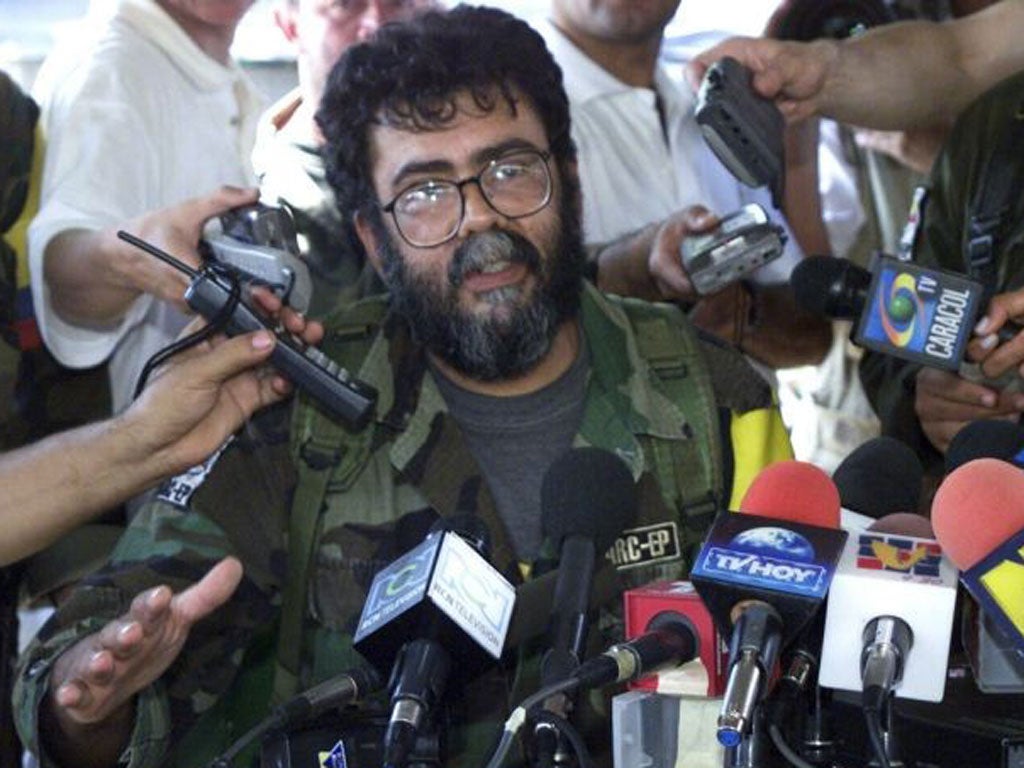Alfonso Cano: Leader of the FARC Marxist guerrilla group in Colombia

Guillermo León Sáenz Vargas, best-known by his nom de guerre Alfonso Cano, was the supreme commander of Colombia's Marxist-Leninist guerrilla group, the Revolutionary Armed Forces of Colombia (FARC), which has been fighting successive governments, and the country's wealthy, for nearly 50 years. He had lead the group since March 2008 when its founder Manuel Marulanda, nicknamed Tirofijo [Sureshot], died of a heart attack.
Cano faced prison terms totalling more than 300 years on charges including murder, kidnapping, extortion and terrorism. The US government was offering a $5m reward for information leading to his capture to face trial on cocaine-smuggling charges. Cano had always denied processing cocaine or smuggling it. He was, however, thought to have carried out the kidnapping of 12 provincial politicians in 2002, after which 11 of them were killed. The government claimed they had been murdered but the FARC insisted they had died in crossfire, possibly between guerrillas who misidentified each other.
Addressing the nation on TV, the Colombian President Juan Manuel Santos described Cano's death, after a raid on his remote camp, as "the most devastating blow that this group has suffered in its [47-year] history. The FARC has reached breaking point and the leadership will come down like a house of cards. I want to send a message to each and every member of that organisation: demobilise, or you will end up in a prison or a tomb." The president had visited the site of the military raid – codenamed Operació* Odiseo [Odyssey] and involving 1,000 troops – near the gold-mining town of Suárez in the south-western province of Cauca.
The thick-bearded, bespectacled Cano, a bookish urban intellectual who gave up anthropology studies and became a communist, joined FARC around 1982, inspired by Fidel Castro and the Cuban revolution. The group originally billed itself as a revolutionary peasant movement – its formal title in Spanish is FARC-EP (Fuerzas Armadas Revolucionarias de Colombia – Ejército del Pueblo, or "Army of the People") and its stated aim has always been land redistribution. But it increasingly turned to kidnapping and cocaine trafficking to pay for its weapons and supplies. One of its most famous victims was Ingrid Betancourt, the former Colombian senator who grew up in France. She was held for six years before being rescued by security forces in 2008.
By the turn of the millennium, the FARC had up to 18,000 fighters, threatened the approaches to Bogotá and, together with a smaller Marxist group, the National Liberation Army (ELN), controlled around one-third of Colombian territory, mostly in the mountains and jungles. It is now thought the FARC has less than 7,000 fighters.
Guillermo Leó* Sáenz Vargas was born in Bogotá in 1948, the fifth of seven children of a middle-class agronomist and his teacher wife. A passionate supporter of the capital's Millonarios football club, he went to the city's National University of Colombia to study anthropology. Around the same time, he joined the JUCO or Juventud Comunista [Communist Youth], part of the Colombian Communist Party.
Increasingly radical, he dropped out of university and spent several years in the Soviet Union in the 1970s. On his return, his Communist Party ties led to contacts with the FARC, for whom he taught Marxist ideology to new recruits, as well as helping raise funds from sympathisers in the capital. He is believed to have become a full-time, uniformed FARC member around 1982, taking on the name Alfonso Cano, and swiftly rose through its hierarchy.
When his mentor, the group's chief ideologue Jacobo Arenas, died in1990, Cano took over as FARC's chief political negotiator. He led a negotiating team facing Colombian government envoys in Venezuela and Mexico in the early 1990s.
In recent months, an army squeeze had forced Cano to flee from his mountain camps in the west-central department of Tolima and move to less familiar terrain in Cauca. After tip-offs, troops knew they were closing in when they found his two dogs and his glasses at an abandoned camp. He was traced, attacked by troops who abseiled from helicopters and hit three times during a shoot-out. According to Carlos Lozano, editor of the weekly newspaper Voz: "while other FARC commanders were talking about blowing up bridges, Cano would be sitting around reading a book."
Cano abandoned his wife and children when he joined the guerrillas in the hills and jungles in the early 1980s. A woman described as his "personal nurse," called Yenifer, was killed with him. His long-time "sentimental companion," a fellow guerrilla known only as Patricia, was not among the victims and her whereabouts are not known.
Guillermo León Sáenz Vargas (Alfonso Cano), guerrilla leader: born Bogotá, Colombia 22 July 1948; married (two children); died near Suárez 4 November 2011.
Join our commenting forum
Join thought-provoking conversations, follow other Independent readers and see their replies
Comments